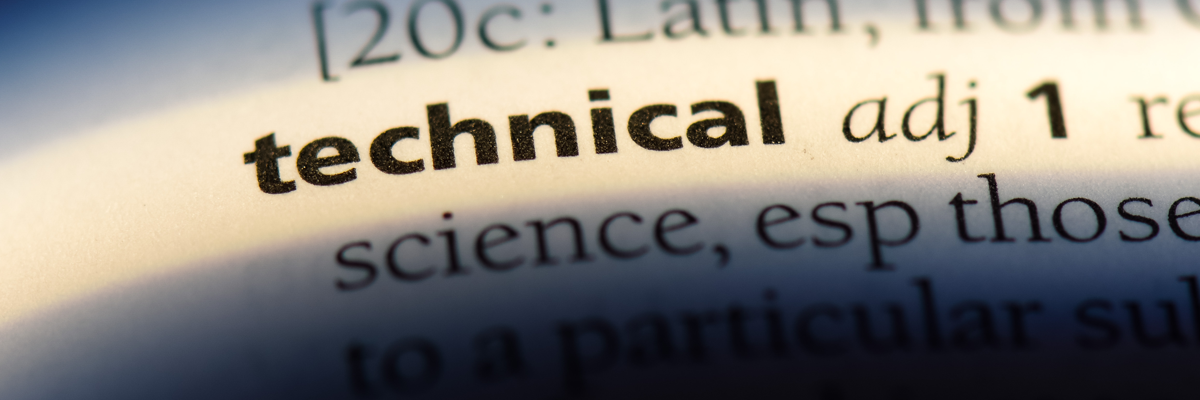When many professionals hear the term “technical writing,” they default to picturing complex manuals full of dense jargon and complicated diagrams.
However, the true essence of technical writing is not about complexity—it’s about radical clarity.
It’s the disciplined art of filtering out noise so that readers can instantly grasp the essential message.
This skill set is invaluable in high-stakes documents like grant proposals, legal contracts, and Standard Operating Procedures (SOPs), where absolute precision can be the deciding factor between success and failure.

At its heart, technical writing is the process of distilling complex or specialized information into its most useful, simple, and actionable form.
A skilled technical writer doesn't just describe a process; they guide the reader through it.
Whether the goal is to assemble a physical product, execute a legal agreement, or secure critical research funding, the ability to communicate clearly and concisely can:
- save time
- minimize errors
- fundamentally build trust
Consider the internationally recognized effectiveness of companies like IKEA, whose instruction manuals rely primarily on visuals to convey detailed, multi-step assembly instructions.
This illustrates a core truth: clarity is a strategic design choice, not an accident.
Behind every simple instruction lies a careful attention to structure, consistent terminology, and, most importantly, the perspective of the end-user—the very same principles that elevate an effective SOP or a successful grant proposal.
2. Grant Writing: Securing Funding Through Flawless Communication

Grant writing is a specialized, high-stakes form of persuasive technical communication.
It requires writers to present data, detailed project plans, budgets, and measurable outcomes with absolute precision, all while maintaining an engaging narrative that convinces a reviewer to invest.
Poor clarity here often means lost funding.
Technical writing skills are crucial because they help grant writers:
-
Structure Proposals Logically: Implement standard organizational patterns and clear signposting so evaluators can quickly find the required information, preventing reviewer fatigue.
-
Harmonize Terminology: Ensure that key terms, methods, and measurable outcomes are defined once and used consistently across the entire narrative, methodology, and budget sections.
-
Translate Jargon for Broad Appeal: Expertly convert highly specialized technical jargon into accessible language for non-specialist or interdisciplinary evaluators, without compromising accuracy.
-
Focus on Measurable Impact: Drive the narrative toward concrete, quantifiable outcomes and replicable methods, transforming ambiguous goals into a clear, instruction-manual-like plan for achieving impact.
A well-crafted grant doesn't just ask for money; it acts as a detailed blueprint for success.
3. Contracts: Mitigating Risk with Unambiguous Language

In the legal and business world, clarity equates directly to risk mitigation.
Ambiguous or overly complex language in contracts and agreements can lead to costly misinterpretations, disputes, and lengthy litigation that stall projects and erode profitability.
Technical writers are essential for drafting contracts because they are trained to:
-
Define Terms Explicitly: Ensure every critical term is defined in a dedicated section and applied consistently throughout the document, leaving no room for subjective interpretation.
-
Eliminate Vague Phrasing: Root out language that relies on subjective judgment, such as “reasonable efforts,” “in a timely manner,” or “as needed,” and replace it with objective criteria and deadlines.
-
Ensure Readability and Logical Flow: Structure clauses, sections, and dependencies in a transparent, logical hierarchy, ensuring the flow of obligations is easy to track and understand for all parties.
-
Align with Regulatory Standards: Precisely align the written content with established regulatory, legal, and industry compliance standards, guaranteeing the document is legally robust.
The best contracts are transparent and precise. They are designed to prevent confusion, not create it—a signature achievement of solid technical writing practice.
4. SOPs: The Engine of Consistency and Compliance

Standard Operating Procedures (SOPs) are the essential backbone of quality control, consistency, and training within any organization, whether it's a pharmaceutical lab, a manufacturing floor, or a financial services office.
A poorly written SOP can lead to significant bottlenecks, safety hazards, and catastrophic compliance failures.
Technical writing helps transform raw process knowledge into usable, repeatable instructions that can be followed without error:
-
Break Down Complex Workflows: Systematically break down large processes into clear, hierarchical, numbered steps, ensuring each step logically follows the last.
-
Utilize Active Voice and Parallel Structure: Employ an active voice and parallel phrasing (e.g., "Check the gauge," "Record the reading," "Sign the log") to provide immediate, actionable instructions.
-
Integrate Visual Aids Strategically: Incorporate visuals, flowcharts, diagrams, or checklists exactly where they add the most clarity, reducing reliance on dense text.
-
Adopt the End-User's Perspective: Write directly to the person who will be executing the task, anticipating their questions and providing only the information they need to act right now.
Clearly written SOPs ensure that training is effective, process deviations are minimized, and every team member is aligned with organizational standards.
5. The Broad Utility of Technical Thinking

The organization, structure, and clarity emphasized in technical writing are more than just document-creation skills—they are transferable thinking skills that enhance leadership and decision-making across all professional roles.
Students and practitioners of technical writing develop habits of organization, logical structuring, and deep audience awareness that apply to nearly every form of professional communication:
-
Internal Communication: Drafting clear, succinct memos, high-level executive reports, and project summaries.
-
Training & Onboarding: Developing comprehensive, user-friendly training materials and system documentation.
-
Data Analysis: Structuring research documentation and white papers so complex data is presented in an easily digestible format for decision-makers.
-
Project Leadership: Guiding project teams with crystal-clear objectives, requirements documents, and process improvement plans.
Learning to methodically simplify and structure complex ideas strengthens your overall ability to manage teams, lead projects, and make confident, data-driven decisions.
Conclusion: Writing That Works in the Real World

In today’s climate of information overload, clarity is a competitive advantage.
Whether your goal is to pursue multi-million dollar funding, formalize a crucial legal agreement, or simply ensure everyone in your organization follows the correct procedure, technical writing provides the tools to communicate with confidence, precision, and guaranteed results.
That foundational discipline is what Oregon State University’s Technical Writing Certificate is designed to teach—how to transform your professional expertise into clear, effective communication that drives understanding, compliance, and ultimately, success.
Related Technical Writing Posts You Might Be Interested In
- Technical Writing vs. Business Writing: What’s the Difference?
- Technical Writing vs. Copywriting
- The Importance of Writing in the Workplace


